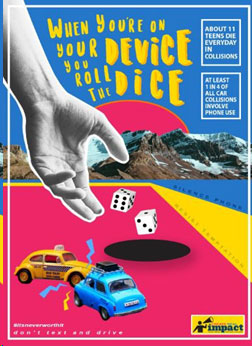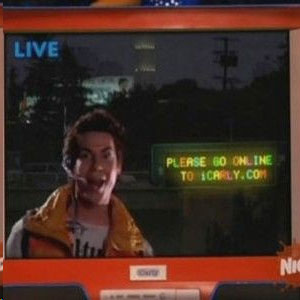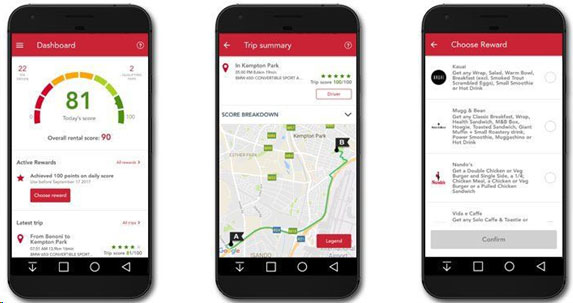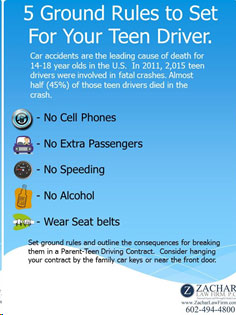The essay below was submitted to The 2019 National Chaffin Luhana Anti-Distracted Driving Scholarship Essay Contest by Kelsey Delauter of North Carolina State University.
Control Your Fate, It Can Wait
Sitting in our pockets, passenger seat, or even outside of the vehicle are deadly weapons. Cellphones, passengers, and other items are major contributing factors to the rising issue in America: distracted drivers. To educate the public through an effective campaign, we must acknowledge our own faults and encourage the implementation of the Wreckless Checklist distracted driving plan.

The first step in creating an effective campaign is educating the public on the topic. Every driver, young or old, are required to take a driver’s education course before obtaining a license. Though widely used, this method has proven to be ineffective. Just like students forget a boring topic after a test, new drivers quickly forget the risks of the road. Humans are by nature visual learners, making computers and television a necessity to spread awareness. Instead of books and verbal statements, the team of Wreckless Checklist will use colorful images to convey powerful messages to our audience. Figure 1, for example, shows the dangers of texting and driving. These eye capturing graphics will be spread across varying mediums including magazines, newspapers, and social media platforms. The campaign will be endorsed by influential people in each community, extending outreach around the nation.

Another way the campaign will spread awareness is through educational videos and television shows. Videos create a human connection, offering empathy and relatability. One can see how distracted driving has impacted another person and make the decision within themselves to never be the reason for someone else’s pain. There are also a number of comedic television shows that have covered the topic of distracted driving. A great example of this is an episode from the Nickelodeon show iCarly that highlights the dangers of flashy billboard signs on a busy intersection. By viewing enjoyable content, families will be educated on distracted driving while spending valuable time together.

New, young drivers are especially important to target in the campaign. Technology has helped create this problem, but it has been an aid in finding a solution. CellControl is an app that blocks texts and calls as well as disabling other phone features. This app can be used by both the driver or a family member on a shared plan to hold the driver responsible. Another app called SafeDrive, shown in Figure 3, rewards drivers with points that can be redeemed into coupons for not using their phone while driving. A new technology that law enforcement is currently developing called Textalyzer works similarly to a breathalyzer, allowing police officers to check a driver’s cell phone usage if the driver is involved in a car accident. If you do not hold yourself accountable, police officers will. Whether motivated by good merit, rewards, or enforcement, there is a technological advancement to help them become safer drivers.

Establishing a set of ground rules is vital for safe driving. While our best friends may be the only person in the world who makes us laugh until our stomach aches, they are probably not the best person to have in the car when you are trying to navigate your surroundings. Drivers should ask passengers to avoid loud and emotional conversations while the car is in motion, dancing, blasting the radio or showing the driver social media content. While it may seem harsh, it will be much easier to apologize for a few rules than for a harmful accident. If a passenger is a child, drivers should find an appropriate area to pull over and tend to their needs. Passengers should handle tasks that would be a distraction if they weren’t there, such as navigating a GPS or communicating with a friend you are planning to meet.
Distracted driving remains a critical danger to every person on or near the road. There are some distractions that can be completely eliminated such as cell phones and some that are inevitable, such as the mood of the driver. Although not all distractions can be stopped, they can be prevented through educational content, safety applications on cell phones, and discussions with friends.